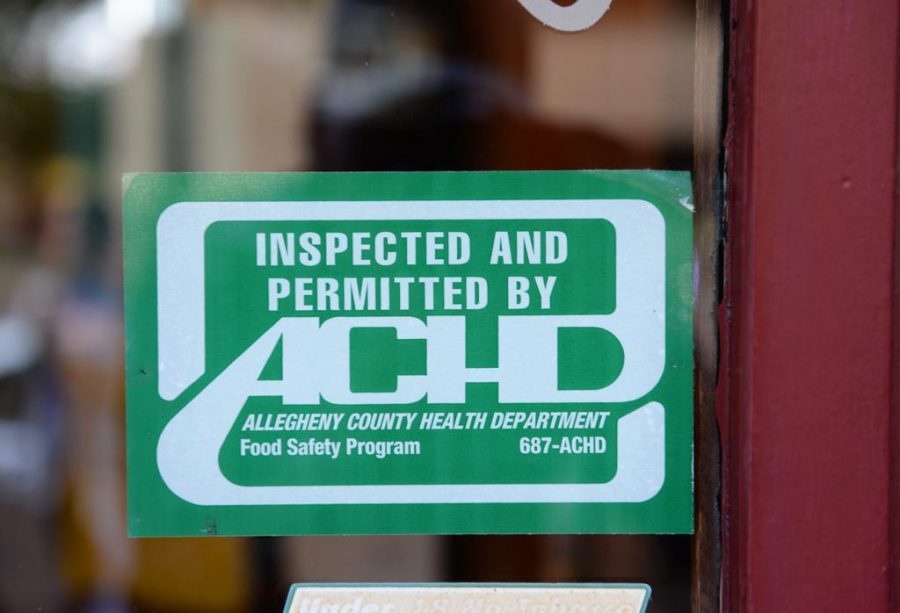Upon entering one of Pittsburgh’s many eateries, you’ll probably find a bright green sticker smacked on the front window, signifying the Allegheny County Health Department’s approval.
Most county restaurants have earned the green sticker — nearly 4,200 restaurants are adorned with the badge — and the ACHD reports issuing only 11 consumer alerts and 11 restaurant closings in the past year. So, health violations must be rare among Pittsburgh restaurants, right?
Not necessarily. According to a report Wednesday by PublicSource, a Pennsylvania investigative news organization, there’s actually “a wide spectrum of cleanliness in the kitchen among restaurants operating with a green sticker.”
In fact, among green sticker restaurants, only 18 percent had zero health violations over the past year, while 12 percent had at least two high-risk violations in a single inspection, according to the report.
Therefore, the sticker system “basically operates as a pass or fail method,” writes Eric Holmberg for PublicSource.
If the sticker is yellow, this marks an ACHD alert of poor health conditions, while a red sticker is a sign of the restaurant’s closing because of poor health.
Lenient standards like the county’s sticker system only help to undermine the health of consumers — especially when considering that one in six Americans suffer from a foodborne illness each year, according to the Centers for Disease Control and Prevention.
Pittsburgh needs to set the bar higher for the restaurant industry — simply because, with such easy requirements for gaining a green sticker, there is less of a reason for restaurants to strive to have perfect health conditions. As long as customers see that a restaurant has “earned” a green sticker, they will most likely assume that it is safe.
Pittsburgh needs to be more transparent regarding restaurant health conditions — not only for the sake of public health, but also for the sake of restaurants where no health violations currently exist.
After all, why should the city reward restaurants that may have high-risk violations the same as it does those that don’t? Keep in mind that a high-risk violation can involve something as simple as not storing food at the right temperatures or not preparing food on clean surfaces, according to the ACHD.
These are simple things all restaurants can — and should — do. There is no reason to reward those that don’t with a green sticker.
Ultimately, the county needs to ditch the sticker system and adopt an A-B-C restaurant grading system.
The grades in this system would start at 100, and then each violation would dock points, with A ranging from 90-100, B from 80-89, and C from 70-79 — anything lower would result in an alert or closure. Inspectors would then place the specific numbered score on the restaurant.
Cities such as New York and Los Angeles already utilize such a system. In fact, since implementing the A-B-C restaurant grading system, the number of A’s that New York City restaurants have received has increased from 50 percent in 2011 to 80 percent in 2014, according to an analysis by FiveThirtyEight, a data-based news site.
If Pittsburgh currently had such a system, a total of 57 restaurant grades “would’ve fallen below a ‘C’ and warranted an alert or closure by the health department,” according to the PublicSource report. This is a much higher number than the 11 alerts and 11 closings that occurred under the current system.
Nonetheless, the county council has considered passing the A-B-C system before and has failed to pass it twice, losing 12-1 in the most recent vote in May.
If the city is waiting for people to get sick to upgrade the system, it might just get its wish.


